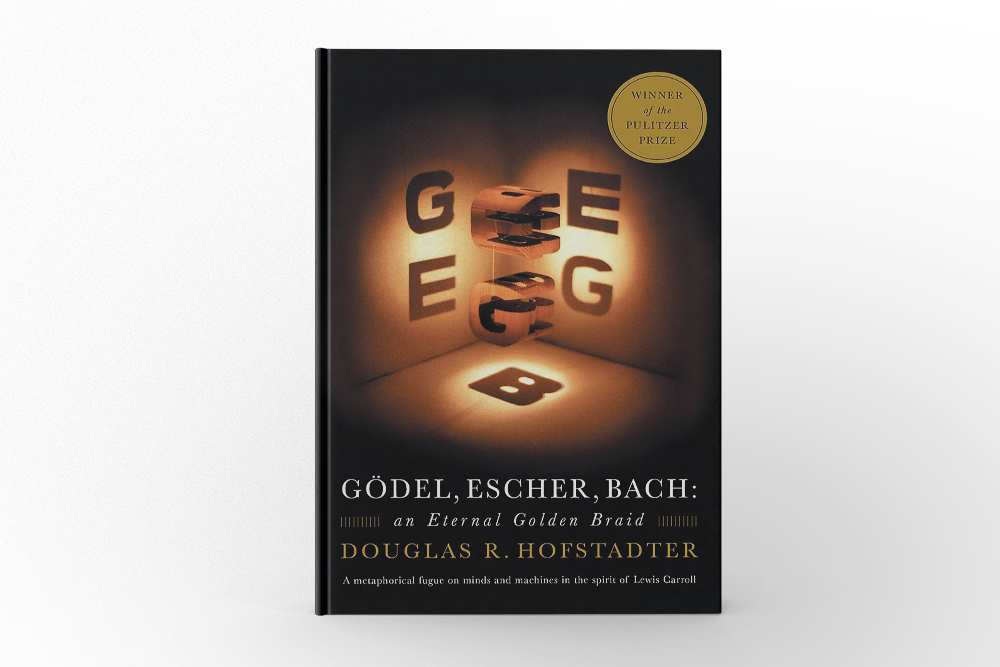“Gödel, Escher, Bach by Douglas Hofstadter” is a remarkable book that delves into the intricate connections between the works of logician Kurt Gödel, artist M.C. Escher, and composer Johann Sebastian Bach. This Pulitzer Prize-winning work explores the profound themes of symmetry, intelligence, and self-reference, offering readers a unique perspective on the nature of human cognition. In this article, we will explore the key themes, insights, and contributions of this extraordinary book.
Author’s Background
Douglas Hofstadter is an American scholar renowned for his interdisciplinary approach to understanding human cognition. Born in 1945, Hofstadter has made significant contributions to the fields of cognitive science, physics, and computer science. His work often explores the nature of consciousness and the concept of self-reference. “Gödel, Escher, Bach” is his most celebrated work, earning him the Pulitzer Prize for General Non-Fiction in 1980. Hofstadter’s ability to weave together complex ideas from diverse disciplines makes his writing both intellectually stimulating and accessible.
In-Depth Summary
“Gödel, Escher, Bach by Douglas Hofstadter” is an interdisciplinary masterpiece that explores the concept of “strange loops” through the works of Gödel, Escher, and Bach. Hofstadter begins by introducing the idea of self-reference and recursion, which are central to understanding the book’s themes. He uses the works of Gödel, Escher, and Bach to illustrate how these concepts manifest in mathematics, art, and music.
The book is structured in a unique format, alternating between chapters of narrative exposition and dialogues between fictional characters, such as Achilles and the Tortoise. These dialogues serve to elucidate complex ideas in a more accessible and engaging manner.
Hofstadter delves into Gödel’s incompleteness theorems, which demonstrate that in any sufficiently powerful formal system, there are statements that cannot be proven within the system itself. This idea of inherent limitations in formal systems is a recurring theme throughout the book. Hofstadter draws parallels between Gödel’s theorems and Escher’s art, which often features impossible constructions and paradoxical perspectives. Escher’s works, such as “Drawing Hands” and “Relativity,” visually represent the concept of self-reference and recursion.
Bach’s music, particularly his use of fugues and canons, exemplifies the idea of recursive structures in aural form. Hofstadter analyzes pieces like “The Musical Offering” to show how Bach’s compositions embody the principles of self-reference and symmetry.
Throughout the book, Hofstadter explores the idea of “strange loops,” which are self-referential systems that can create meaning and complexity from simple rules. He argues that these strange loops are fundamental to understanding human consciousness and intelligence. By drawing connections between the works of Gödel, Escher, and Bach, Hofstadter illustrates how these loops manifest across different disciplines.
Themes and Insights
One of the central themes of “Gödel, Escher, Bach by Douglas Hofstadter” is the concept of self-reference and its role in creating meaning and complexity. Hofstadter argues that self-referential systems, or strange loops, are essential to understanding human cognition. This theme is explored through the works of Gödel, Escher, and Bach, each of whom used self-reference in their respective fields.
Another key theme is the interconnectedness of different disciplines. Hofstadter’s interdisciplinary approach highlights the commonalities between mathematics, art, and music, showing how similar principles can manifest in different forms. This theme underscores the idea that human creativity and intelligence are not confined to a single domain but are instead deeply interconnected.
The book also explores the limitations of formal systems and the nature of human intelligence. Hofstadter uses Gödel’s incompleteness theorems to illustrate the inherent limitations of formal systems, arguing that human intelligence transcends these limitations through its ability to recognize patterns and create meaning.
Recommendation
“Gödel, Escher, Bach by Douglas Hofstadter” is a must-read for anyone interested in the nature of human cognition, the interplay between different disciplines, or the concept of self-reference. Hofstadter’s engaging writing style and interdisciplinary approach make this book accessible to a wide audience, from mathematicians to artists to general readers. Whether you are a seasoned scholar or simply curious about the nature of intelligence, this book offers valuable insights and thought-provoking ideas.
Impact and Legacy
Since its publication, “Gödel, Escher, Bach by Douglas Hofstadter” has had a profound impact on both the academic and popular understanding of human cognition. The book has been praised for its ability to make complex ideas accessible and engaging, and it has inspired further research and exploration in fields ranging from cognitive science to artificial intelligence.
The book’s influence extends beyond the realm of academia. It has sparked interest in the works of Gödel, Escher, and Bach, bringing their contributions to a broader audience. Hofstadter’s interdisciplinary approach has also encouraged a more holistic understanding of human creativity and intelligence, highlighting the interconnectedness of different fields.
Conclusion
In conclusion, “Gödel, Escher, Bach by Douglas Hofstadter” is a profound exploration of the nature of human cognition and the interconnectedness of different disciplines. Hofstadter’s detailed narrative brings to life the challenges and triumphs of understanding intelligence, offering valuable insights into the concept of self-reference and the role of strange loops. Whether you are a mathematician, an artist, a musician, or simply a curious reader, this book offers a rich and rewarding experience.
Personal Reflections
Reading “Gödel, Escher, Bach by Douglas Hofstadter” is not just an intellectual journey but an emotional one as well. Hofstadter’s passion for the subject matter is evident throughout the book, and his ability to convey the beauty and elegance of the interconnectedness of different disciplines is truly inspiring. This book reminds us that the pursuit of knowledge is a deeply human endeavor, driven by curiosity and a desire to understand the world around us.
